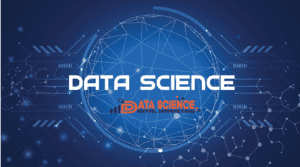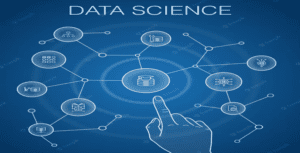Latest Trends in Data Science 2024
The copious amount of data poses a significant challenge in terms of organization and effective sharing. This is where high-performance computing (HPC) systems come into play, as they can handle data at higher resolutions and accommodate the growing popularity of big data analytics.
Data science is a field that is constantly changing and innovating, taking us into new areas of knowledge. The year 2023 is expected to bring significant trends that will redefine our approaches to gathering and interpreting data. The fusion of data science and technology provides valuable insights into our rapidly changing digital landscape. Acquiring skills in data science is a crucial step towards a promising career, given the high demand for data scientists in today’s dynamic job market. Organizations increasingly rely on data-driven insights for decision-making, leading to a growing need for efficient data scientists. accompanied by competitive salaries and abundant job opportunities in diverse industries.
Embracing data science is more than just learning a skill; it’s about preparing yourself for a future where data is crucial for success. It’s not surprising that the high-performance data analytics market is expected to grow from USD 85.28 billion in 2023 to USD 215.14 billion by 2028, with a CAGR of 20.33%.
In exploring the latest trends within data science, we embark on a journey to explore the dimensions of artificial intelligence, machine learning, and advanced analytics. By examining these trends, we discover how they are redefining frameworks, transforming industries, and advancing us toward a world rich in data-driven insights.
Top Data Science Trends to Follow in 2024

Market progress in data science is wide-ranging and offers important advantages to professionals with degrees in this field. To succeed in the global technology market, organizations need to understand the evolving patterns and future forecasts related to data science. Similarly, data scientists should familiarize themselves with various data science trends to improve their effectiveness in this industry. Let’s explore five prominent data science trends that will shape the years ahead.
Edge Computing
Edge computing involves processing data near the location where it is gathered. This allows for immediate decision-making based on information acquired from internet-connected sensors in various locations, such as factories, transportation networks, retail stores, and remote areas.
According to Gartner’s projection, by 2025, approximately 75% of the data generated by enterprises and managed by organizations will be produced and processed outside of the traditional data center or cloud infrastructure.
The trend toward edge analytics is on the rise, especially in situations requiring quick responses to real-time data. To support this, the concept of “edge” is evolving into a more comprehensive idea known as “fog computing.”
Fog computing expands the edge paradigm by bringing processing capabilities closer to the data source, incorporating increased computation, storage, and communication through smaller-scale data centers. In its pursuit of broadening network possibilities for the Metaverse, Meta has observed that edge computing can reduce strain on public cloud resources, leading to improved customer experiences.
Over the next two to five years, there will be advancements in chip and operating system optimizations specifically designed for edge computing. At the same time, companies will adopt ultralow-latency 5G networks, which are integral elements of the Industrial Internet of Things (IIoT). This combined progress is poised to accelerate the evolution of the next automation era and unlock a myriad of innovative AI applications.
Data-as-a-Service (DaaS)
Data as a Service (DaaS) is a data management strategy that utilizes data as a valuable corporate asset to enhance business agility. It falls under the “as a service” category, which became popular alongside the rise of the internet in the 1990s and the introduction of Software as a Service (SaaS). Like other “as a service” models, DaaS enables businesses to effectively manage large daily data streams and facilitates the distribution of crucial data throughout the organization, empowering informed decision-making. DaaS solutions free data from the confines of traditional data centers. However, unlike Software as a Service (SaaS), DaaS does not provide business users with application functions without local installation. Similarly, it lacks the app development environment offered by Platform as a Service (PaaS). According to Market Research Future, the DaaS market is predicted to achieve a 36.9% compound annual growth rate (CAGR). Its projected value is anticipated to reach $67.85 billion by 2030.
Federated Learning
Federated learning enables mobile phones to collaboratively develop a shared prediction model without centralizing training data in the cloud. On-device model training goes beyond local models making predictions on mobile devices (such as Mobile Vision API and On-Device Smart Reply).
Here’s how it works: Your device fetches the existing model, improves it by learning from your device’s data, and condenses the changes into a compact update. This update is the only part transmitted to the cloud via encrypted communication. Once there, it’s combined with updates from other users to improve the shared model. Importantly, your data remains on your device, and no individual information is stored in the cloud.
Federated learning provides intelligent models, reduced latency, and lower power usage while maintaining privacy. Additionally, this approach offers an immediate benefit: not only does it improve the shared model, but the enhanced model on your device can also be promptly utilized, enabling personalized experiences based on your phone usage patterns.

Robotic Process Automation
Robotic Process Automation (RPA) is a software technology that allows individuals to automate digital tasks easily. With RPA, users can create software robots, also known as “bots,” to handle rule-based business processes by observing human actions in the digital environment. Users simply need to provide instructions to the bots, and then the bots can take over the workload while interacting with applications and systems in a human-like manner. One notable feature of RPA bots is their ability to operate continuously at a consistent pace, achieving high speed with unmatched reliability and precision.
Real-World RPA Examples
Human Resources:
According to ZIPPIA’s research, the recruitment process is often lengthy and expensive, averaging $4,700 per hire in 2023. Robotic Process Automation (RPA) provides the opportunity to streamline and automate repetitive and rule-based functions that are essential to recruitment and onboarding. It offers various forms of support, such as unbiased applicant sourcing, automated resume and candidate evaluation, and the management of documentation for new recruits, including form completion and submission. By utilizing RPA capabilities, businesses can expedite and simplify the hiring process, reduce costs, and improve operational efficiency.
Customer Support:
RPA enables quick responses and improved customer satisfaction by automating routine customer support tasks. It categorizes inquiries, directs them to the appropriate departments, and uses chatbots to provide self-help resources. This reduces wait times, saves costs for the organization, and helps customers promptly resolve their concerns. RPA speeds up responses, enhances customer satisfaction, and improves operational efficiency.
Finance and Accounting
Accounting and financial management play a crucial role in businesses. However, they often involve repetitive tasks and are prone to errors without directly contributing to revenue generation. Robotic Process Automation (RPA) offers an effective solution for automating these tasks.
For example, in the Accounts Payable department, invoice processing is a labor-intensive procedure that includes matching invoices with purchase orders and obtaining payment approval from various stakeholders. By implementing RPA, you can automate the invoice approval process and streamline purchase order alignment, allowing your team to focus on exceptional cases. This demonstrates how RPA can be utilized in accounting and finance.
As a result, finance and accounting departments are frequently at the forefront of organizations that are considering adopting RPA.
Inventory management in retail
Retailers deal with a wide range of labor-intensive tasks that are well suited for effective automation, particularly as e-commerce’s influence grows. Inventory management is one area that stands to benefit significantly from automation, particularly by using robotic process automation (RPA).
Retailers need to manage several items across different areas, so they need to make sure they have enough inventory to meet demand and get important insights on market trends.
In this domain, RPA offers a variety of automation solutions to address these complexities, such as:
- automatic procurement or even notifications for declining inventory levels.
- adjusting stock levels to maximize working capital use without compromising the ability to meet customer demands.
- a decrease in inventory inconsistencies, which is common in over 60% of cases.
- examination of sales data on a national and international level.
- Retailers may increase productivity, simplify procedures, and maintain their competitiveness in the ever-changing retail landscape by implementing RPA into inventory management.
Generative AI
“Some people call this artificial intelligence, but the reality is that this technology will enhance us. So instead of artificial intelligence, I think we’ll augment our intelligence.”
—Ginni Rometty
In the ever-changing field of artificial intelligence, one specific technology stands out: generative AI. This is because it can imitate human creativity and communication in very effective ways. This cutting-edge technology has completely changed a variety of fields, including interactive discussion and language understanding, as well as creative and musical pursuits.
Leading the way in this revolutionary voyage is the Generative Pre-trained Transformer (GPT) series, which includes the ground-breaking GPT-3 model, an OpenAI invention.
The global market for generative AI in 2023 holds a substantial value exceeding $13 billion. Forecasts predict a staggering growth trajectory, with projections indicating that this market will soar beyond the $109.37 billion threshold by 2030.
Generative AI and NLP
It becomes crucial to stress the value of NLP-boosted conversational analytics in the context of generative AI. This crucial combination significantly improves the capabilities of conversational interfaces, such as chatbots and virtual assistants.
By producing responses that resemble those of a person, generative AI models—such as the well-known GPT-3 and its variants—improve NLP-boosted conversational analytics in chatbots and virtual assistants. Through improved analysis and more relevant and cogent replies, this integration improves consumer relations and creates more realistic human-machine interactions.
One example is customer assistance, where chatbots are enabled to provide thoughtful and genuine replies by combining generative AI with NLP-enhanced conversational analytics. This leads to a positive customer experience.
NLP-Aided Conversational Analytics
Artificial intelligence (AI)-powered conversational analytics analyzes spoken and written human discourse. Computers can better comprehend and organize data for learning with the aid of natural language processing, or NLP.
With conversational analytics, computers can efficiently extract and organize data by learning the subtleties of human language via natural language processing (NLP). This gives AI the ability to interpret speech and extract insights from a variety of conversations over long periods—possibly years.
Conversational AI is about to undergo a revolution thanks to AI automation, and the market for natural language processing is expected to expand fourteen times faster in 2025 than it did in 2017.
Conclusion
In conclusion, technological advancement, the abundance of large data stores, and the growing demand for data-driven insights across industries drive continuous transformation in the data science field. It is crucial to remain well-informed and flexible in this rapidly progressing domain. As we venture into the data-centric future, the potential is boundless, and its repercussions on society are substantial.
 Data Science in Digital Marketing Data Science in Digital Marketing: Mechanism Examples, Benefits Data Science Meets Digital Marketing Magic
Data Science in Digital Marketing Data Science in Digital Marketing: Mechanism Examples, Benefits Data Science Meets Digital Marketing Magic



